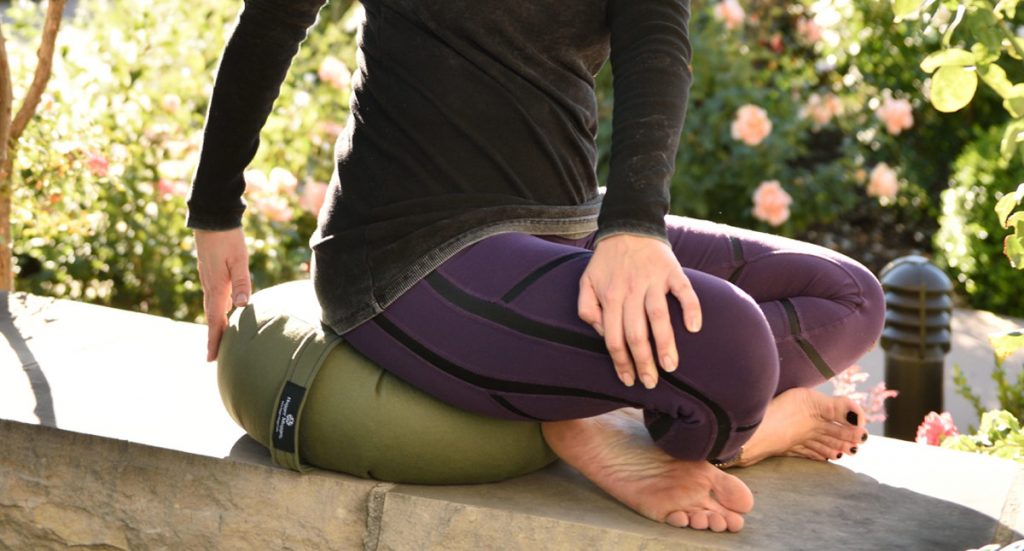SI Joint Health: Part 4
Who doesn’t love a good spinal twist? For most people, rotating the spine feels refreshing. With the exception of twisting to the right to look behind us while we back our cars up or change lanes, we don’t rotate our spines a lot in our daily lives. That could be why twisting feels so good. But twisting in yoga can be perilous for the SI joint if we don’t practice with both care and knowledge. A few weeks ago, I wrote about the importance of not squaring the hips in standing poses. The same holds true for twisting.
Many years ago, I learned from a multitude of yoga teachers that keeping the hips squared in a seated twist helps rotate the lumbar spine. That would make sense if the lumbar spine was capable of rotating. The fact is, the facet joints come together in such a way that the lumbar spine is only capable of about 1 to 3 degrees of rotation. That’s about 2 to 4 millimeters. So when we try to force the lumbar spine to rotate, we can instead end up rotating the sacrum. This can lead to SI joint dysfunction.
How to Keep the SI Joint Safe in Seated Twists
If you are having symptoms of SI joint dysfunction, your best bet is to avoid twisting, at least until you start to feel better. But if your SI joint is feeling okay, try this tip for keeping the joint stable and healthy. The following example explains how to keep your SI joint safe in Parvrtta Sukhasana (Rotated Easy Seated Pose).
Sit in Sukhasana (Easy Pose) on a folded yoga blanket so that your hips are higher than your ankles.
Rotate your torso to the right. As you rotate, you will likely feel the right side of your pelvis wanting to scoot back as well. Instead of resisting this, let the right side of the pelvis scoot back. This keeps the twist in the thoracic spine, which is the part of the spine that is designed to twist.
Practicing simple twists in this way can help you avoid SI joint problems in the future. This adjustment can be applied to all seated twists.
It’s important to avoid twists where you’re levering with your arm when your SI joint is out of place or if your SI joint is prone to dysfunction. So you should practice any seated twist where you’re placing your elbow on the outside of an upright, bent knee with care. Instead of placing your elbow on the outside of your knee, simply hold the knee with your hand.
Leave a Reply Cancel reply
Recent Comments
Archives
- November 2025
- October 2025
- September 2025
- August 2025
- July 2025
- June 2025
- May 2025
- April 2025
- March 2025
- February 2025
- January 2025
- December 2024
- November 2024
- October 2024
- September 2024
- August 2024
- July 2024
- June 2024
- May 2024
- April 2024
- March 2024
- February 2024
- January 2024
- December 2023
- November 2023
- October 2023
- September 2023
- August 2023
- July 2023
- May 2023
- March 2023
- August 2022
- July 2022
- June 2022
- May 2022
- April 2022
- March 2022
- February 2022
- January 2022
- December 2021
- November 2021
- October 2021
- September 2021
- August 2021
- July 2021
- June 2021
- May 2021
- April 2021
- March 2021
- February 2020
- January 2020
Theme by The WP Club . Proudly powered by WordPress
